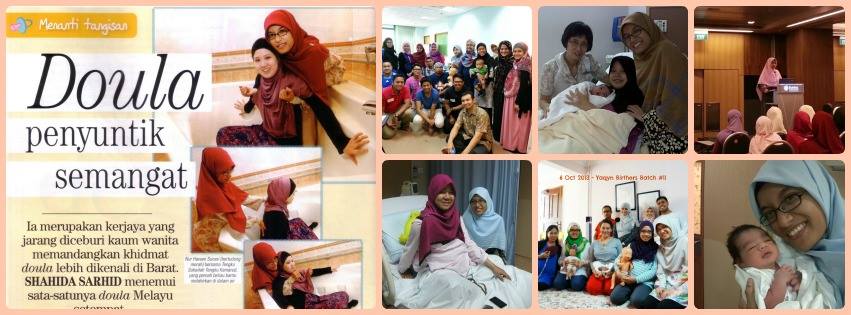Written in the style of http://www.mothering.com/articles/love-letter-midwife/ (Thank you Kristen Tea for the inspiration!)
Bismillah,
Dear Red,
Firstly I thank Allah for giving me the opportunity to engage you as my midwife!
Thank you for attending the birth of my third born, Honeystar.
Thank you for your continuous support throughout my pregnancy, labour, birth and postnatal period.
Thank you for your wisdom, guidance and knowledge.
Thank you for showing great respect to my pregnant, birthing and post-birth body.
Thank you for being gentle, patient and kind.
Thank you for the monthly (and then weekly) prenatal visits to my home and spending an hour patiently discussing my concerns or just chatting.
Thank you for taking the time to reply to all my phone and whatsapp queries.
Thank you for including Raizan in as many meetings as possible even if this meant having to come to my home after office hours.
Thank you for giving me evidence-based information for my decision-making and then respecting me in my choices.
Thank you for guiding and preparing me on the possible scenarios and necessary backup plans.
Thank you for trusting in ‘nature and the divine’ which happen to be aligned to my Islamic beliefs.
*note: the thing that struck me most about Red was her ‘setting an intention’ to everything that we want to do. That is in essence the basis of our Muslim practice, as the hadeeth goes – Innamal a’maalu binniyyaat (meaning: Actions are dependant upon their intentions).
Thank you for being respectful of my ‘labour space’ and allowing me to freely move and choose my positions.
Thank you for the sacral massage during labour which magically reduced the intensity (not kidding!).
Thank you for not doing any unnecessary interventions.
Thank you for ensuring that the environment was safe for Honeystar to come in to.
Thank you for not rushing the baby or me and allowing me to take a one-sec breather before letting me pick up Honeystar myself.
Thank you for the newborn checks done after we had time to bond as a family.
Thank you for the postnatal visits.
Thank you for the constant reminder to respect my post-birth body and let it heal properly (Indeed! Recovery has been quickest for this birth).
Thank you for doing what you do! Thank you for giving women like me the option to birth safely and comfortably at home with family.
Thank you Allah, for choosing Red to be my midwife!
(And not forgetting my other midwives: AbangH’s – Jacqui, Rosebud’s – Amelie and Honeystar’s assistant midwife – Amy. Thank you for all the love!)








